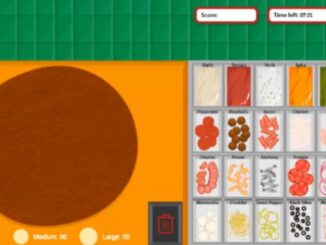
The aim of this article is to help the reader reflect on the value playtesting activities can add to the process of designing learning games or any type of playful learning activity. A general conceptualisation of playtesting will be presented followed by a short guide on how to run playtesting sessions.
Playtesting
Playtesting is the moment of truth, the moment that you or other players try your prototype and you record the feedback and reactions and try to understand what works and what needs to be changed in the game. Playtesting can be useful to improve game design even if one person plays your game. You still gain loads of interesting feedback that can help improve it. Don Norman (2013), one of the most famous researchers of cognitive design and usability that helped Apple design some of their most iconic products, suggests that testing your product with five users helps identify 85% of the problems the design has at that stage of development.

Prototyping and playtesting are a coupled iterative process that can happen again and again until you feel you have a game that can go into the final design and production phase. Fullerton (2018) presents the below model conceptualising the relationship between prototyping and playtesting and how the process helps you test and narrow down your game’s details the further you go into the design and development process.

The Iterative Game Design Model demonstrates the process of going from your initial prototype to the final version of the game with play testing sessions providing data that are evaluated and then enable revisions of the game. Playtesting helps identify what game elements are working and which ones need some tweaking, always keeping in mind that game designers should be serving the game’s end users.
HOW TO RUN A PLAYTESTING SESSION
You and your team can be the first play testers and many times there are a lot of insights that you can draw from playing your own game but there are limitations to how much you can learn from people that are close to the game. After you make sure you have a playable prototype you can give it to your close friends and family to try out but again do not forget that these people are close to you and they might be biased towards liking your game or might have a hard time giving you honest feedback because of your personal relationship. The best play testers are people you do not know that can be considered potential end users.
If you are making an educational game for elementary school kids for example, testing your game out with children or their teachers can be very useful. The first thing you need to avoid when playtesting is to defend your game. Ideally, someone else should be facilitating the playtesting sessions and game designers should be just observing or watching a video of the playtesting session afterwards. The point of playtesting is not for the designers to pitch the game to anyone but to identify which elements of the game work and which elements need to be tweaked or even taken out. Listen to everything the testers say and write it down or record it with your phone or on video if possible. There will be plenty of time to analyse the data your testers give you. Do not answer a lot of critique during playtesting. Just make sure you write everything down. Before you start playtesting do not pitch your game to your testers, there is no need for a 15 minute presentation of why you built this game and what the goal is and what your aspirations for it are. A 2-3 minute intro to the game and a brief explanation of its rules are enough. Ideally you should have written all the rules on a piece of paper and players should be able to play without your help.

If you are part of the game design team, I would advise that every member of the team be present at the playtesting session if possible. If you have a team of twenty people or some similar large number, make sure to record the session on video and share it with everyone. It is normal for a designer to get defensive about their game. If the feedback is visible to all though then there can be no disagreements about the changes that should be made to improve the game.
Check out the review of Vasilis’ book ‘Designing Games and Gamification for Learning here
References and further reading:
Deep Dive: Playtesting – How to Get Good Feedback on Your Game (video)
Books: “Game Design Workshop” suggested chapter “Playtesting”
“The Art of Game Design” suggested chapter “Good Games are Created Through Playtesting”
“The design of everyday things”.Fullerton, T., (2018). Game design workshop: a playcentric approach to creating innovative games. AK Peters/CRC Press.
Norman, D., (2013). The design of everyday things: Revised and expanded edition. Basic books.
- Adding Playtesting to your Game Design Process - 16th September 2021





Be the first to comment